Yeast. Just the word instills fear into the hearts of cooks everywhere. Since fear is often rooted in mystery, I’m going to dispel some of the mystery surrounding baking yeast.
What is yeast?
Yeast is “a microscopic fungus consisting of single oval cells that reproduce by budding, and are capable of converting sugar into alcohol and carbon dioxide” (Google.com).
What does yeast do?
Simply put, yeast makes bread rise. The gas it expels creates bubbles within bread dough making it lighter in texture than an unleavened bread (think flat bread: tortillas, matzo, etc.).
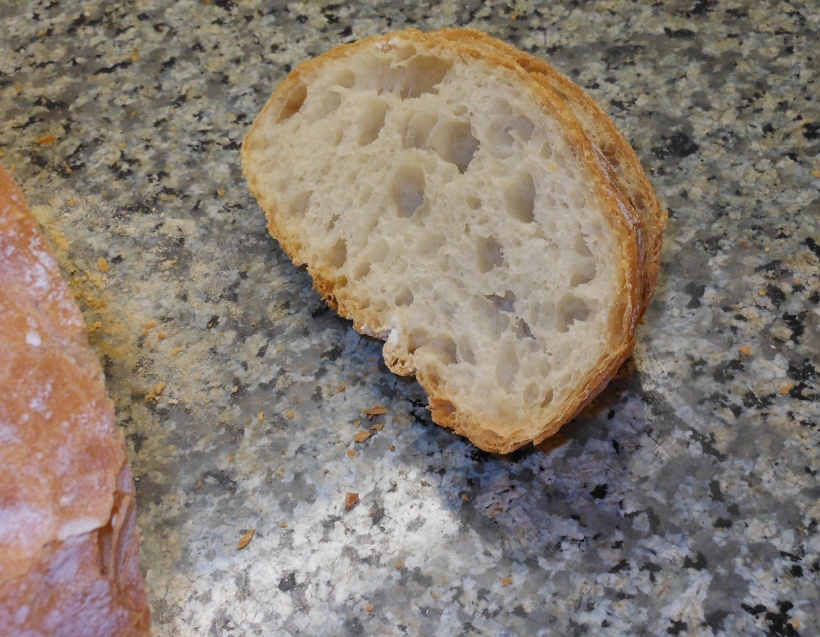
See the bubbles? That’s from the yeast! Want to make this bread? Here’s the recipe.
Is there more than one kind of yeast?
Yes. This post focuses on baker’s yeast, but there is also nutritional yeast and brewer’s yeast. There are three basic types of baker’s yeast: Cake (fresh) yeast, Active Dry yeast, and Instant yeast. The two most commonly used forms of yeast in the USA are Active Dry and Instant.
What’s the difference between “Active Dry” and “Instant” yeast?
• Active dry yeast is the yeast most Americans are familiar with. It is recommended that you “proof” the yeast before you use it. Some people consider active dry yeast finicky and difficult to use.
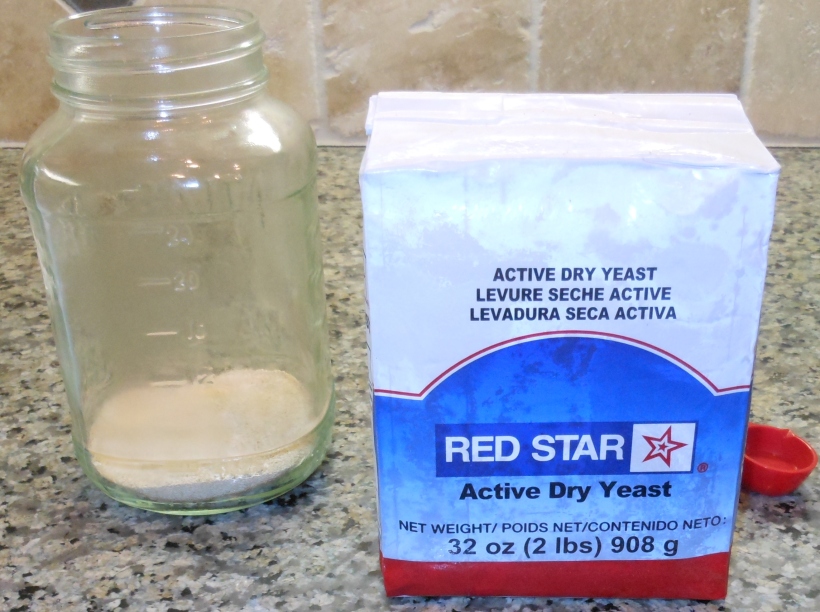
Active Dry Yeast – commonly available. It’s much less expensive to buy in bulk. A 2 pound package costs less than $5 at my local Costco.
• Instant yeast, also knows as “fast-acting” or “rapid rise” yeast, is becoming more common. It can be used without proofing by simply mixing it in with the dry ingredients. It rises more quickly than active dry yeast. Many consider it easier to use.
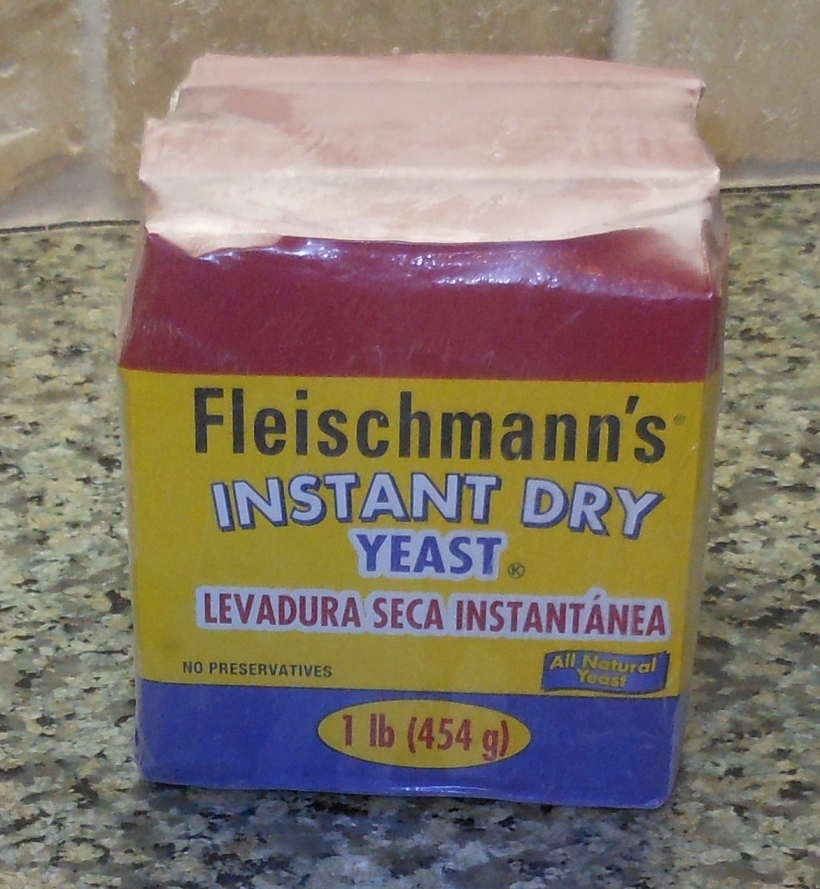
Instant (rapid-rise or fast-acting) yeast is also commonly available. This 2 pound (total weight) package was less than $5 at Sam’s Club. One thing I love about Sam’s Club is their free “click ‘n’ pull” program. I can shop online and my local club pulls my order. Then I pick it up when it’s ready. So easy!
Why would anyone use active dry yeast when it’s more finicky?
Bread tends to be more flavorful when made with active dry yeast than with instant yeast, because the bread develops more flavor during rising.
How do I proof yeast?
To proof yeast, you need a warm liquid (usually water) and yeast. Sugar will help the yeast proof more quickly. Simply put a small amount of sugar (1 teaspoon will do it) into lukewarm water. Then stir in the yeast, and let it sit. If the yeast is good, it will bubble up within a few minutes and look like this:
If you let it continue to proof, it will continue to expand like this:
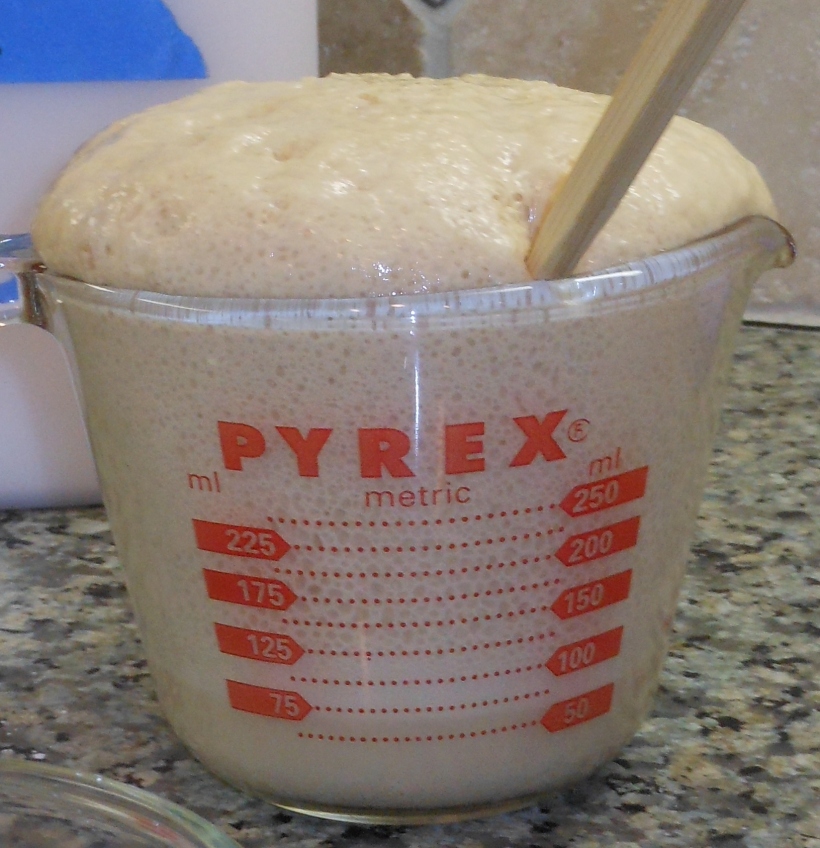
This yeast proofed very quickly, so quickly, in fact, it almost bubbled over! It didn’t hurt the yeast, but I needed to act fast so I didn’t make a mess.
What happens if my yeast fails?
Your dough will not rise.
Why does yeast fail?
The most common reason yeast fails is that the liquid is too hot. Yeast is a living organism, and it will die if it gets too hot. To test your liquid, put a drop on the inside of your wrist. If it feels hot, the liquid is probably too warm for the yeast. It’s better for the liquid to be too cold than for it to be too warm. If the liquid is too cold, your dough will rise more slowly, but it will rise.
A less common reason yeast fails: the yeast is too old. At some point, yeast will no longer make dough rise. I’ve never had this happen, but it can. I store my yeast in the refrigerator and freezer. I keep my main stock in the freezer with some in a mason jar in the fridge.

I keep this mason jar in my fridge with yeast in it. I refill it from my main stock stored in the freezer when I fun low. I’ve never had a problem with yeast being too old to work properly.
Can I fix my dough if I realize I killed my yeast?
One reason I like proofing my yeast first, is that I always know it is working before I spend all that time making bread, cinnamon rolls, pretzels, etc. If I killed my yeast, I can dump it and start over without dumping the rest of my ingredients. It’s much easier to prevent a problem than to fix a problem.
If you have already made your bread, it is possible to add additional yeast to the recipe. Once your dough is cool enough (you don’t want to kill the yeast again), you can add instant yeast directly to the dough. If using active dry yeast, you want to proof it first. Keep in mind that you will need to add more flour to offset the additional liquid, but it should turn out just fine.
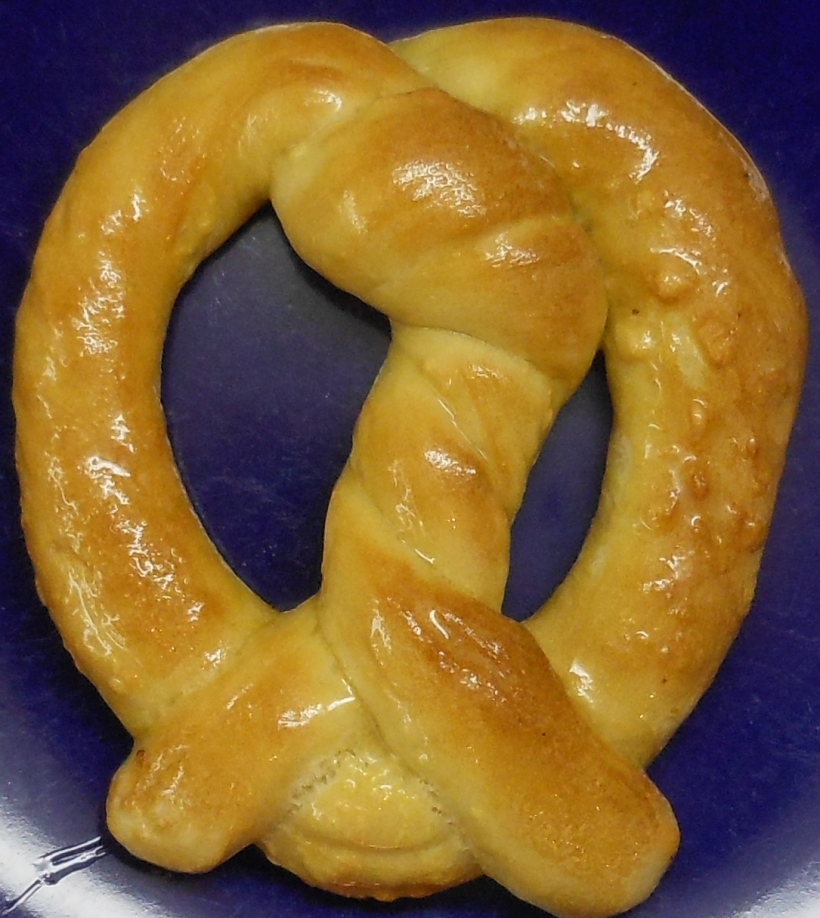
Yummy Knock-off Auntie Anne’s Pretzels made with active dry yeast. Find the recipe here.
Did this help? Do you feel you can try out a yeast recipe without worrying about instant failure?
If so, what will you bake first?
If not, what’s stopping you?
* This post contains an affiliate link. For more details about affiliate links, please visit my “about” page. *

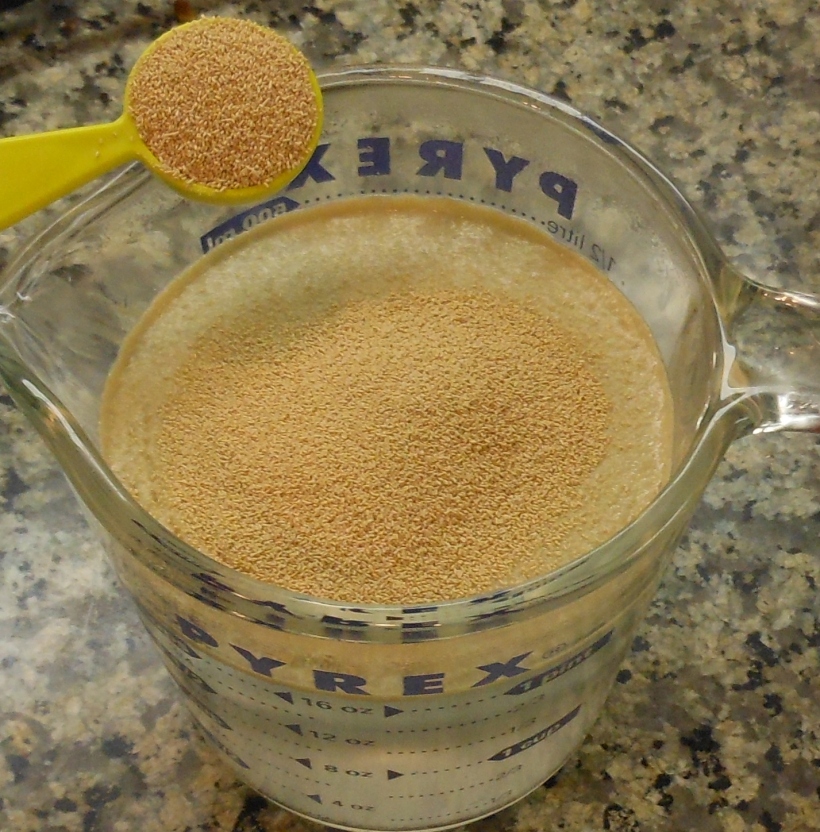
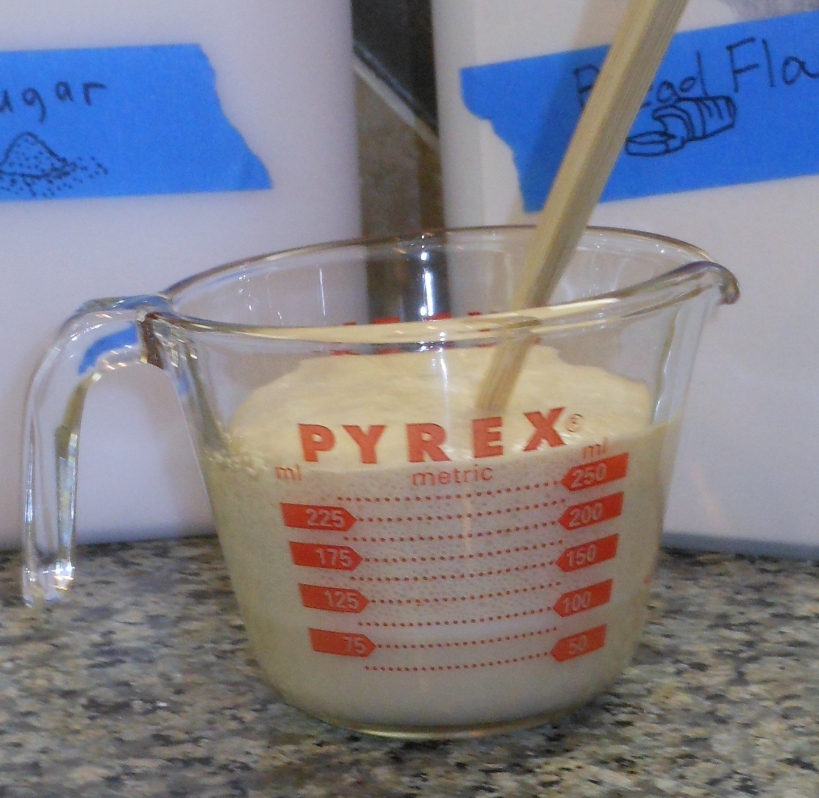
March 28, 2014 at 4:55 pm
Ah, just make a sourdough starter and you’ll be done with yeast forever. Great bread, great waffles, great pancakes. And if you keep it fed it will live forever and can be passed down to your relatives who will probably hate you forever. Seriously, I love my sourdough starter, which I will have to start again, since it died when I broke my shoulder, but the one I had was about 40 years old. Freeze it when you are tired of baking with it, thaw it when you are ready, and you’ll never have to deal with yeast again. I just didn’t get mine in the freezer in time.
LikeLike
March 28, 2014 at 5:06 pm
I have a sourdough starter, and I use it, but I still love my yeast. 🙂
LikeLike
March 28, 2014 at 5:43 pm
I second the sourdough starter! I keep both types around use which ever one I’m in the mood for! 🙂
LikeLike
March 28, 2014 at 5:46 pm
Lol, that is true, the word is scary but it does make a lot of good dough. Takes a lot of patience to know how to make it rite, but I think it is healthier than buying those Pillsbury things or similar, which will never substitute home-made bakes) I am glad you made it )
LikeLike
March 28, 2014 at 6:04 pm
I love those yeasty beasties! – Fawn
LikeLike
March 28, 2014 at 6:17 pm
Confession: I have been known to swear at uncooperative yeast, sadly, it did no good lol
LikeLike
March 28, 2014 at 6:59 pm
I have been wanting to make my own bread for months now, but I’m too afraid! I don’t know anything about yeast or making my own bread. I have an obsession with pretzels and just want to make my own and make my own honey mustard dip… mmm…
LikeLike
March 28, 2014 at 8:51 pm
Pretzels are yummy and well worth the effort. I made some about a week ago. If you want to read about it, here’s a link to the post. http://forayintofoodstorage.com/2014/03/22/knock-off-recipe-test-auntie-annes-pretzels/
LikeLike
March 28, 2014 at 8:01 pm
This did actually help me! Now I get why some of the recipes call for mixing it with the water and sugar! I’m trying to get more familiar with yeast and bread baking!
But speaking of sourdough… Have you posted a brilliant recipe for me to try yet?
LikeLike
March 28, 2014 at 8:52 pm
Not yet. Sorry! I promise I will soon. 🙂
LikeLike
March 28, 2014 at 8:24 pm
A good thing to know: If a recipe calls for active dry yeast, you can use instant yeast instead by making slight modifications to the recipe.Multiply the amount of active dry yeast the recipe calls for by 0.75 to find out how much instant yeast you need.
LikeLiked by 1 person
March 28, 2014 at 8:53 pm
Great tip!
LikeLike
March 28, 2014 at 9:23 pm
Reblogged this on FabiFabu and commented:
Interesting notes about yeast and how to work with it.
LikeLike
March 29, 2014 at 12:44 pm
My sister gets me the same instant yeast yo use from Sam’s also. I get one pound a year, but might use more, and I make my own bread every week. 4-6 loaves.. (2 are for my parents). I use unbleached Gold Medal Flour, not their bread flour. Since the health community harps about eating gluten free I thought LOW gluten bread would be the result of my unbleached AP flour. My daughter is a FACS teacher and she says instant yeast does not make a flavorful loaf of bread. What do you think? So I let the bread rise in the fridge overnight to add to the flavor. I weigh my 24 oz loaves and knead and shape then let rise the second time in the tins, it takes a good three to four hours for the second rise since the dough is cold.
LikeLike
March 29, 2014 at 9:43 pm
I haven’t used instant yeast yet, although I have some sitting in my freezer. I’ve read that the faster rise time makes a less flavorful loaf. Once I open my yeast, I’ll let you know. 🙂
LikeLike
March 29, 2014 at 12:46 pm
I have a cooking blog in blogspot. http://www.onemorerecipe.blogspot.com
LikeLike
March 29, 2014 at 3:31 pm
I have started using instant yeast because it is so darn convenient. I buy the bag at Sam’s club as well. Love it! I sometimes proof it as well, depending on the recipe, even though it’s not entirely necessary.
LikeLike
March 30, 2014 at 4:35 am
Thanks for sharing this insight in Yeast. But what is actually the difference between “Active Dry” and “Instant” yeast. You say American families are more familiar with the first than the last, but nothing about the properies of the different kind of yeast itself. I assume Instant yeast is the fresh yeast you can buy at a bakery to make your own bread and the active dry yeast is the years that’s powder which you can buy in packs/satchels and such?
Or is there another difference?
LikeLike
March 31, 2014 at 8:05 am
Both instant and active dry are dry yeasts. Instant yeast is smaller and dissolves into liquid more easily, so it doesn’t need to be “proofed” first. Both come in packets or larger foil packages.
LikeLike
March 30, 2014 at 5:55 am
Cool information! I love baking bread this is superbly informative
LikeLike
March 30, 2014 at 5:03 pm
Awesome info, thanks!
My mother-in-law is a fantastic baker but she tells me she had a bad experience with yeast decades ago and hasn’t touched it since. I love to make bread, and have even started grinding our own wheat for it.
LikeLike
March 31, 2014 at 8:00 am
I grind some of my own grains, too. They make such lovely flours!
LikeLike
March 30, 2014 at 8:32 pm
Nutritional yeast is delicious and amazing on popcorn. Have you heard of this method of trying to bake with wild yeast? It is really interesting but I have not tried it.
LikeLike
March 31, 2014 at 7:59 am
I have not yet tried it. I’ve considered it, but haven’t taken the plunge yet.
LikeLike
March 31, 2014 at 11:05 am
I too am interested in wild yeast. I want to start a culture but am going to wait to move to a place with a bigger kitchen first. 🙂
LikeLike
April 2, 2014 at 10:18 pm
Thanks so much. I tried to do your bread recipe two weeks back but it failed. I didnt realize I was using active dry yeast instead of instant so I didnt proof it. Lol… I’m gonna try baking bread again this weekend.
LikeLike
April 3, 2014 at 11:51 am
I’m sorry it didn’t work for you. You can use instant or active dry yeast, but with active dry, you will have better results if you proof it first.
Best of luck!
LikeLike